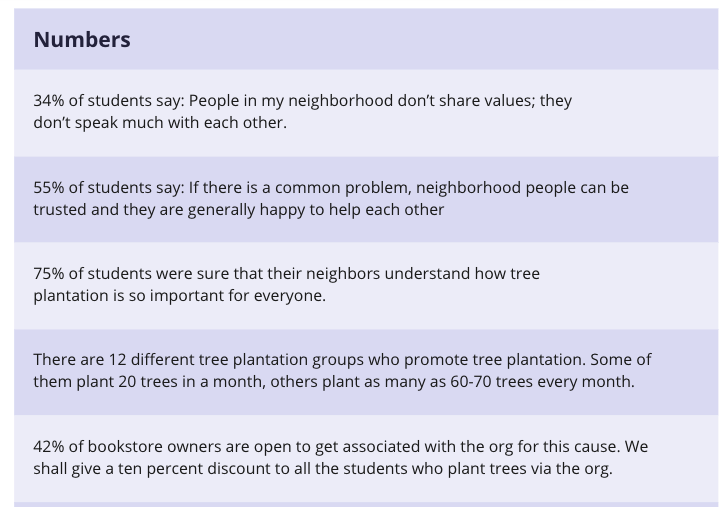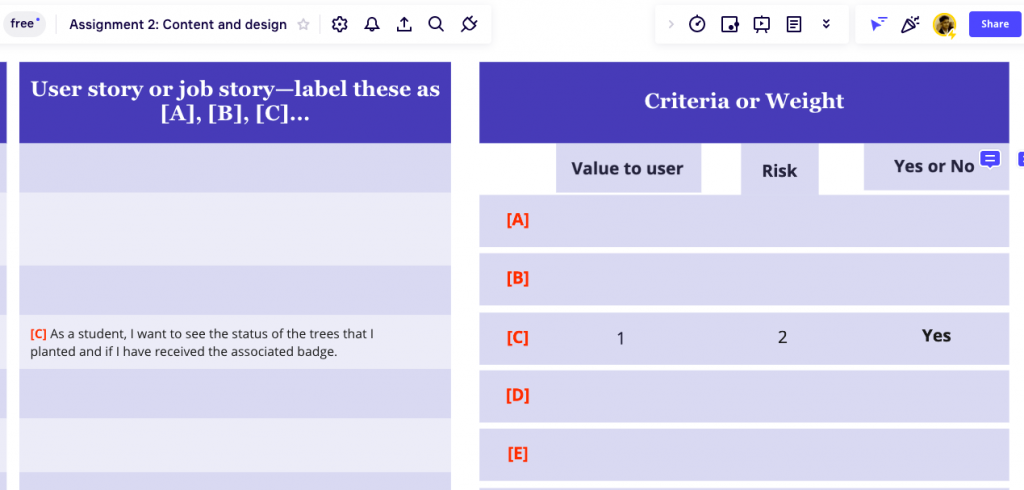This is the second assignment in my series of assignments in content design and UX writing. The content designers and UX writers can use these assignments for self-practice, or even to build on these as part of their portfolio while seeking a new job or a new contract.
I have shared some basic details in this post and you can see the Miro board for the exact steps and the deliverables. The Miro board is in the view only mode for public, you can create a Miro account if you do not have it, and copy this assignment to your Miro account to work on the assignment.
You cannot learn or test your content design or UX Writing skills with this kind of experience. The only goal here is to build self-talk or build conversations with your friends, peers, or contacts in your network with whom you can discuss and then possibly figure out a strategy and your approach to this kind of work.
The product and the task
Product: A non-profit that educates the school students to plant a new tree every month—one tree in a month. The students will earn a badge for each tree they will plant. They can use these badges to get discount if they buy a book from the local bookstore. The non-profit has partnered with a few bookstores in the city.
Task: I will give you some user research insights. Your task is to (a) write the user stories or job stories, and (b) design three content mockups from those user stories.
The organization goals
- Improve students’ awareness about the benefits of planting trees
- Make them plant more trees and offer them an incentive. They get a badge for every tree they plant, and they can redeem that badge at a bookstore to get a discount if they buy books from the store.
- Bring in more book stores as partners
- To seek donations to help fund the project; they need funds to run this project for technology investments, and for their operations
- North Star Metric: Number of trees planted in a week or month
Key metrics
- Get five new sign ups in a day (150 new accounts in a month)
- Get one hundred trees planted by first time users in a month (by new students)
- Ten percent more trees planted by all other users (the registered students who had already planted at least one tree)
- Onboard two new bookstores every month
The audience
Students: The school students who already have an idea about the benefits of planting new trees; sometimes they lack the right motivation and the awareness to actually plant a new tree.
The local book store owners: They might be keen to show up their stores in the partners’ listing—it brings them free visibility, and new customers of course. It adds to their branding that they are associated with the non-profit for a cause.
Students’ mental models: They think that they don’t get many chances—whom to approach, etc. Sometimes, they don’t see an effective CTA that really pushed or encourages them, and so they lack a sense of urgency or motivation.
User research—statements and numbers.
The user research insights show a few statements from the target audience, and some numbers from the research. These should help you plan the foundational stories of the product to get started with designing the content.

The steps
You can follow a few steps to complete the task.
- Study the organization goals and their key metrics to understand what they want.
- Use the user research insights to draw a matrix for the customer sentiment—the numbers give you some directions to know their concerns.
- Write the high-level product stories before you start planning the user stories or job stories.
See the Miro board for assignment 2 in content design and UX writing.

As I said, the goal is to build the conversations with your friends, peers, or contacts in your network with whom you can discuss your approach to this kind of work. If you are curious to try it—find it in this Miro board.
I plan to publish one such assignment on the Thursday in every week. Wish you good luck if you want to try these.
